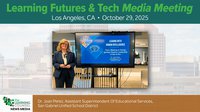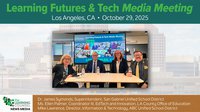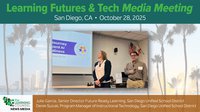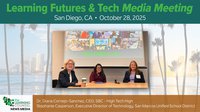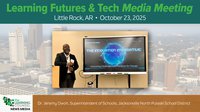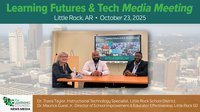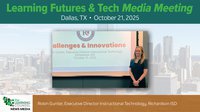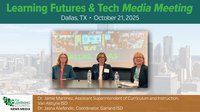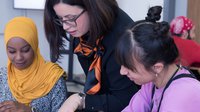As we navigate through an era dominated by rapid technological advancement, education systems across the globe are embracing new tools and methods that reflect the dynamic ways students learn. The current generation of students, often called the "Creation Generation," are digital natives who have grown up immersed in technology. At the same time, many of their teachers are Millennials and Gen Z educators who understand the digital world and leverage it to foster deeper engagement and innovative learning experiences. Below are the top six ways technology is making a profound impact on today’s classrooms:
1. Enhanced Access to Learning Materials
One of the most significant advantages of technology in education is easy access to abundant learning materials. Textbooks, lectures, videos, podcasts, and interactive resources are available at students' fingertips. Students can access information anytime with digital tools like e-books and online libraries. This eliminates barriers related to location and availability, meaning learning can happen beyond traditional school hours. As a result, education is more flexible and personalized.
2. Personalized Learning Experiences with Real-Time Feedback
The days of waiting weeks for test results after an exam are over. With technology, teachers can provide immediate feedback on assignments, quizzes, and projects. Digital tools allow educators to assess student progress in real-time, offering insights into their strengths and areas for improvement with low-stakes formative assessments. This timely feedback motivates students to adjust and helps educators tweak their lessons to enhance the learning experience.
Thanks to the wealth of data and insights that technology can provide, educators can tailor lessons to meet students' individual needs. Adaptive learning platforms use algorithms to personalize the pace and style of instruction, ensuring that students receive content that suits their current knowledge level and learning preferences. This individualized approach helps bridge learning gaps and maximizes each student's potential.
3. Flipped Classrooms for Deeper Learning
In a flipped classroom model, students review lecture materials and lessons at home through videos and digital content. Technology in education delivers content and challenges students to think critically and creatively. Platforms for coding, design software, and simulation games encourage students to engage with complex concepts and develop problem-solving skills. Classroom time is then dedicated to applying knowledge, discussing complex ideas, and engaging in collaborative problem-solving.
This method leverages technology to make the most of limited class time and fosters a deeper understanding of the subject matter. It encourages students to take more responsibility for their learning and allows teachers to focus on high-level engagement during face-to-face interactions.
These technologies empower students to create, experiment, and innovate—invaluable skills in today’s rapidly evolving workforce. Today's students are content creators—let them create in the classroom! Video, audio, and publishing tools allow students and teachers to create content for learning anytime!
4. Leveling the Playing Field
Technology is a game changer for students with disabilities, as it offers a wealth of resources designed to support their learning. Assistive technologies such as speech-to-text software, audiobooks, and adaptive devices ensure students have the tools they need to succeed. These technologies help level the playing field, providing an inclusive environment where students with diverse learning needs can thrive alongside their peers.
5. Preparing for Future Careers in a Tech-Driven World
As the job market becomes increasingly tech-focused, students must develop digital literacy and technical skills to compete. Classroom technologies teach students subject-specific knowledge and familiarize them with the tools and skills they'll need in their careers. Learning coding, graphic design, video editing, or robotics in school allows students to gain hands-on experience with in-demand skills before entering the workforce.
6. Increased Teacher Collaboration and Professional Development
Millennial and Gen Z teachers are integrating technology into their teaching practices to create more effective learning environments, but they are also benefiting from technology in their professional development. Online platforms and digital communities allow teachers to share resources, exchange ideas, and access training. This collaborative environment helps teachers stay up-to-date with the latest trends in pedagogy and technology, improving their teaching methods and benefiting their students.
Final Thoughts
Technology integration in today’s classrooms is not just a trend; it’s a necessity for preparing students for an increasingly digital future. The "Creation Generation" thrives on technology's immersive, interactive, and personalized experiences. As educators—many Millennials and Gen Z—continue to embrace digital tools, they create a dynamic learning environment where students are empowered to think critically, collaborate globally, and acquire skills that will help them succeed in the 21st century. Technology is no longer just an accessory to education; it’s an essential element of the modern classroom.
About the author
Dr. Tracy Savell Weeks is a seasoned education leader with extensive experience in education policy, business development, and digital learning. She currently leads Education Policy Strategy at Instructure as Senior Director of Education Policy and Strategy, where she drives the company’s federal policy agenda, manages key relationships, and activates policies and education initiatives that align with the company’s mission and business objectives.
Previously, Dr. Weeks served as Vice President of State Partnerships and Government Affairs at Securly, influencing education policy and cultivating strategic relationships. She has also held leadership roles at Microsoft and the State Educational Technology Directors Association (SETDA), shaping national education strategies and digital learning policies.
Her experience extends to state education leadership, having served as Chief Academic and Digital Learning Officer at the North Carolina Department of Public Instruction and Executive Director of the North Carolina Virtual Public School.
Dr. Weeks holds a Ph.D. in Curriculum and Instruction from North Carolina State University and has contributed to higher education as an adjunct professor. A respected speaker and policy advisor, she has presented at the White House, Capitol Hill, and major education conferences nationwide.



